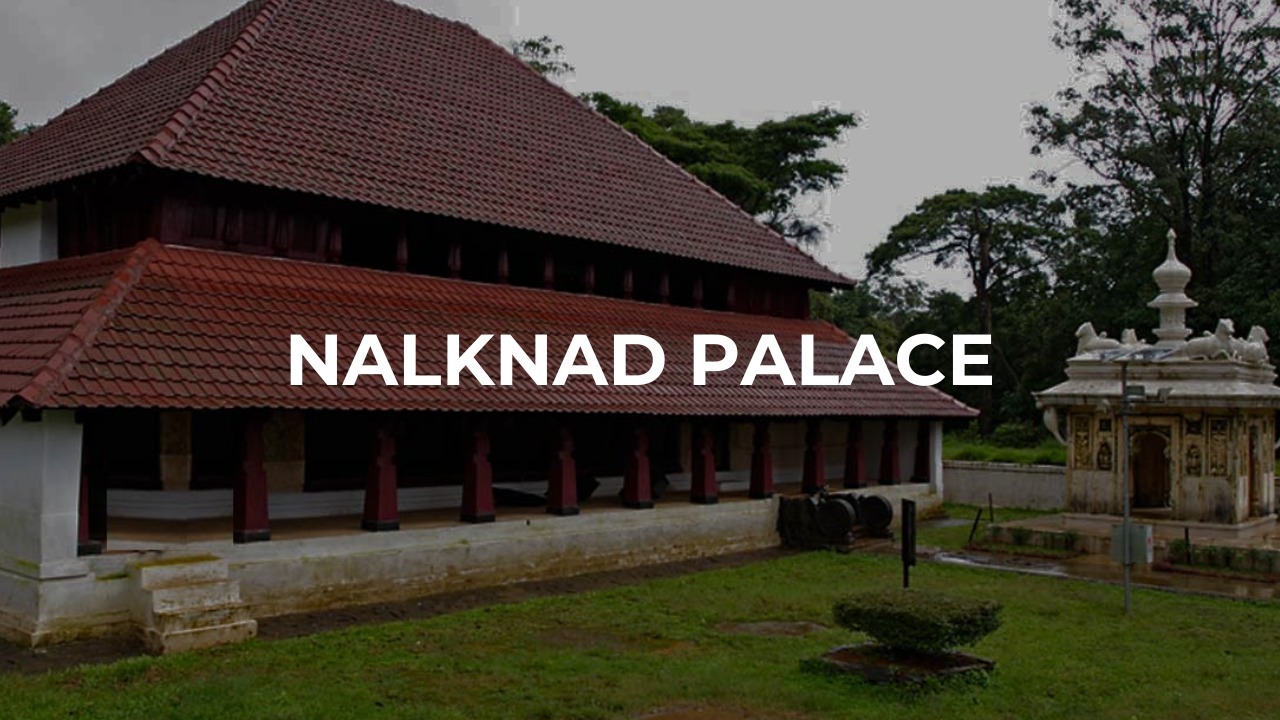Introduction:
Nalknad Palace, also known as the Nalknad Aramane, is a historic palace situated in the Coorg (Kodagu) district of Karnataka, India. Nestled amidst the verdant hills and lush landscapes of Coorg (Kodagu) in Karnataka, the Nalknad Palace is a historical gem that offers a captivating glimpse into the region’s royal past. Located in the village of Nalknad, about 30 kilometres from Madikeri, this palace stands as a testament to the architectural and cultural heritage of the Kodava dynasty. This 18th-century royal residence offers a unique insight into the region’s architectural and cultural heritage. Built by Chikka Virarajendra, the last ruler of the Kodagu dynasty, the palace reflects the grandeur of Coorg’s royal history and serves as a significant cultural landmark. Nalknad Palace was built in 1792 by the then Kodava chieftain, Doddavira Rajendra, and later expanded by his descendants. The palace served as a summer retreat for the Kodava kings, providing them with a serene environment away from the administrative duties and heat of the main town, Madikeri. The palace holds historical importance as a residence of the Kodava rulers and as a site of significant events in the region’s history.
The palace exhibits traditional Kodava architecture, characterised by its distinctive style and materials. Built primarily from wood and laterite stone, the structure features sloping roofs with tile cover, wide verandas, and intricate wooden carvings. The architectural style reflects the local building traditions and climate considerations. The interior of Nalknad Palace is adorned with elegant wooden panelling and traditional Kodava motifs. The spacious halls and rooms, though simple, provide a glimpse into the lifestyle of the Kodava royalty. The palace’s design includes features like high ceilings, large windows, and verandas that facilitate natural ventilation and cooling. The palace is decorated with traditional Kodava art and craftsmanship. The wooden carvings and embellishments on the doors and windows are notable for their intricate designs, showcasing the skill of local artisans. Efforts are made to preserve and maintain Nalknad Palace, ensuring that it remains a valuable part of Coorg’s heritage. Conservation initiatives focus on protecting the structure from environmental damage and preserving its historical and architectural integrity. Visitors are encouraged to respect the site and follow any guidelines to help in its preservation.
Distance: From Bangalore to Nalknad Palace in Coorg (Kodagu) is approximately 250 to 275 kilometres (about 155 to 171 miles). The journey typically takes around 5 to 6 hours. From Mangalore to Nalknad Palace in Coorg (Kodagu) is approximately 130 to 150 kilometres (about 81 to 93 miles). The journey typically takes around 3 to 4 hours. From Mysore to Nalknad Palace in Coorg (Kodagu) is approximately 115 to 130 kilometres (about 71 to 81 miles). The journey typically takes around 3 to 4 hours
Nalknad Palace is famous for its historical significance, architectural style, and scenic location. Key aspects of its fame include:
1. Historical Significance:Built in the 18th century by Chikka Virarajendra, the last ruler of the Kodagu dynasty, the palace is an important symbol of Coorg’s royal heritage. It served as a retreat for the royal family and played a role in the region’s history.
2. Architectural Beauty: The palace features traditional Kodagu architecture with a unique blend of Indian and colonial styles. Its design includes intricately carved wooden panels, elegant arches, and spacious courtyards. The architectural style reflects the royal grandeur and craftsmanship of the time.
3.Cultural Heritage: Nalknad Palace is an integral part of Coorg’s cultural heritage, offering visitors a glimpse into the lifestyle and history of the Kodagu royal family. The palace’s historical significance and architectural features make it a valuable cultural landmark.
4.Scenic Location: Set amidst lush greenery and rolling hills, the palace offers a serene and picturesque setting. The natural beauty surrounding the palace enhances its historical charm and provides a tranquil environment for visitors.
5.Preserved Artefacts: The palace houses several artefacts, including old photographs, royal portraits, and traditional furnishings, which provide further insights into the royal lifestyle and history of the Kodagu dynasty.
The ideal time to visit Nalknad Palace is between October and March when the weather is pleasant and suitable for outdoor exploration. The cooler months provide a comfortable environment for sightseeing and enjoying the natural beauty of Coorg. Visitors should be respectful of the palace’s historical and cultural significance. Photography may be restricted in certain areas, so it’s advisable to check with the local staff or guides before taking pictures. Modest attire is recommended when visiting historical sites.
Conclusion: Nalknad Palace stands as a remarkable testament to the regal heritage of Coorg. Its traditional architecture, historical significance, and serene surroundings offer a unique glimpse into the life and times of the Kodava royalty. A visit to Nalknad Palace provides an enriching experience, highlighting the architectural and cultural richness of Coorg and offering a peaceful retreat into the region’s illustrious past.


0 Comment